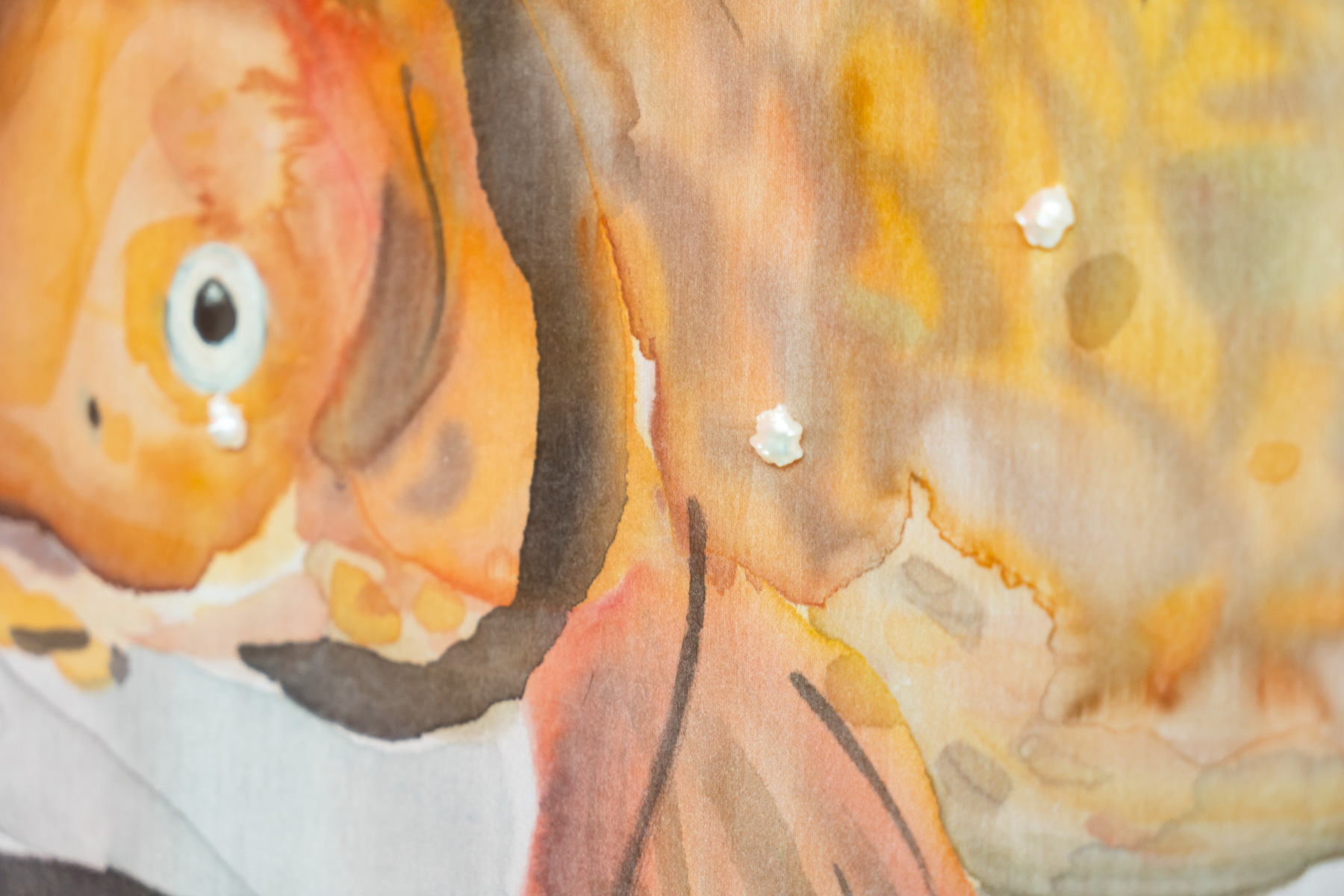
Chun Yin Rainbow Chan (b. 1990) is an award-winning vocalist, producer and artist that lives and works in Naarm/Melbourne. In 2022, Chan was recognised in the "40 Under 40: Most Influential Asian Australians Award" for her contribution to arts and culture and was also awarded Artist of the Year at the FBi SMAC Awards.
At UQ Art Museum, our current exhibition Mare Amoris | Sea of Love features a new commission by Chun Yin Rainbow Chan, titled “The novice, fry and fledging 我全未曉”, 2023. Chan’s interdisciplinary artistic practice actively and lovingly regenerates the dying 圍頭 (Weitou) language and cultural practices through a contemporary lens. Specifically, women’s oral history, folk songs known as ‘bridal laments’ with a focus on her ancestral ties to Weitou people, the first settlers of Hong Kong. Together, Chan’s practice reflects diasporic experiences and her deeply personal encounters with the subjects of love and loss.
哭嫁 (bridal laments) are songs performed by women in 圍頭 (Weitou), one of the Indigenous dialects of Hong Kong. 圍頭 (Weitou) is a dialect of Cantonese, spoken for over a millennium by 圍頭 (Weitou) people, the first people of Hong Kong. The 哭嫁 (bridal laments) were sung during a three-day period before the arranged marriage of a 圍頭 (Weitou) bride to her husband. This cultural practice was a rare opportunity where the bride could mourn publicly, expressing grief, sorrow, and fear for the end of their matrilineal identity.
Last practised in the 1960s, Chan learnt the 哭嫁 (bridal laments) by spending time in the 圍頭 (Weitou) community with a small group of women in their 80s and 90s, who, before now, were the last to hold the knowledge.
In “The novice, fry and fledging 我全未曉” commissioned for Mare Amoris | Sea of Love Chan takes a lament that uses animals as metaphors for the bride's pain. The installation comprises three large silk paintings, multichannel sound, and text. The animals who feature in the lyrics of the laments are presented throughout Chan’s silk drawings, representing the feelings and sufferings of the bride (“catfish, flat-headed, in an unfamiliar place”), as well as reflecting upon the freedom before marriage (unlike “Huamei, chirping in the dead of the night” – a caged bird).

The title of the artwork “The novice, fry and fledging 我全未曉” alludes to new learning of 圍頭 (Weitou) language for Chun Yin Rainbow Chan. “fry” references a term for young fish species, and “fledging” refers to the new wing feathers of a young bird, making it fit to fly. With humble care and sensitivity to the experiences of family and kin, Chan often performs 圍頭 (Weitou) language in pop songs, extending the significance of these matrilineal songs to supportive community spaces, where people can connect with the songs in new ways.
Throughout Mare Amoris | Sea of Love, artists and their kin give language, voice and form and to our watery spaces, passed down through ancestral storytelling, embodied memories and land-based knowledge systems. Together the alluring audio recordings of Chan’s lament that accompany the rippling silk drawings, present a multilayered personal exploration of the artist’s matrilineal ancestry. “The novice, fry and fledging 我全未曉” plays an integral role in maintaining and reviving the practices of the 圍頭 (Weitou) people, intertwining concepts of memory and distance. In union, Chan’s audio, text, and silk paintings reimagine the lament in a contemporary manner.
UQ Art Museum is deeply grateful for the involvement of this artwork as part of our current exhibition Mare Amoris | Sea of Love. Within this exhibition, artworks trace stories from the intertidal zone and waters beyond, drawing attention to Indigenous sovereign rights in our coastal spaces and the importance of preserving ancestral knowledge systems.
Learn more about our current exhibition here.



